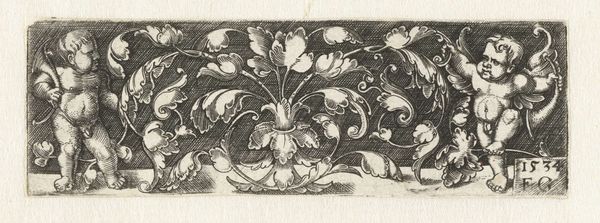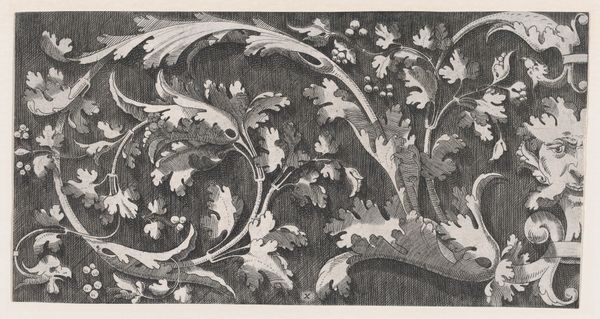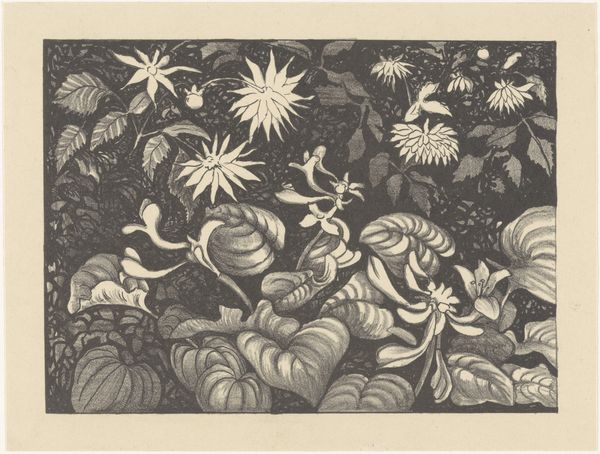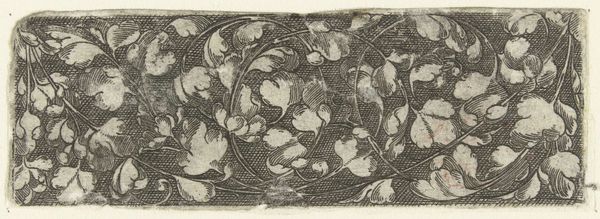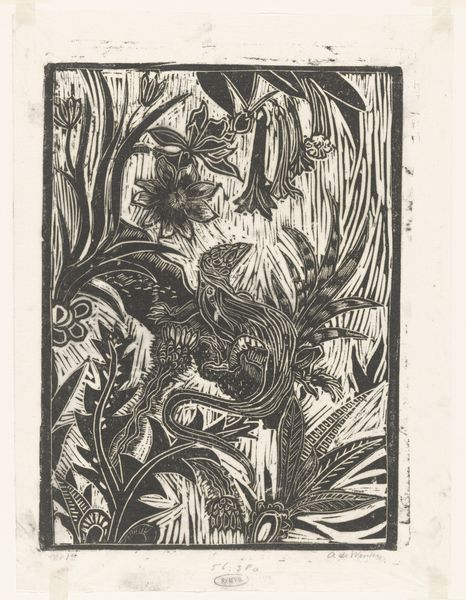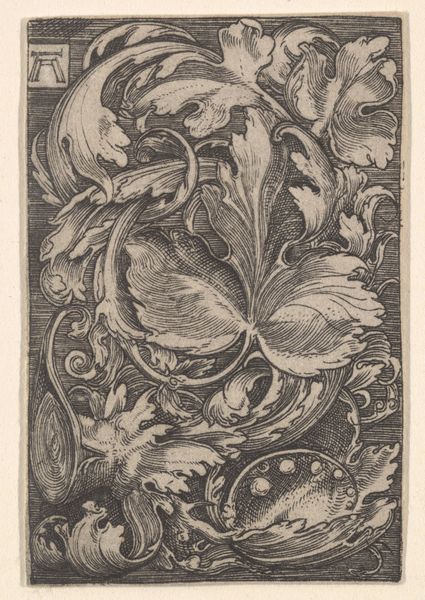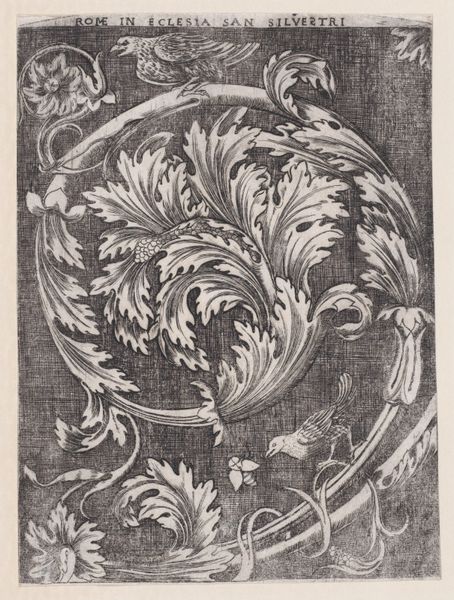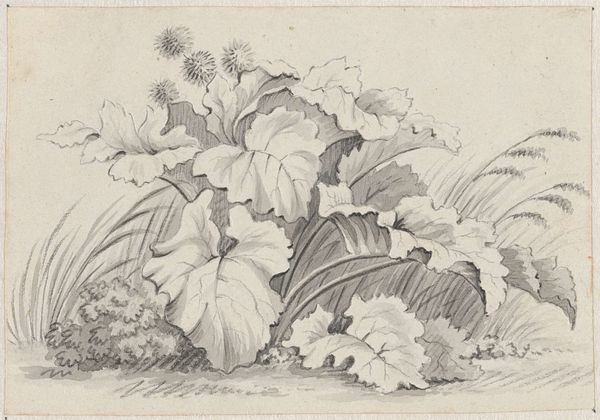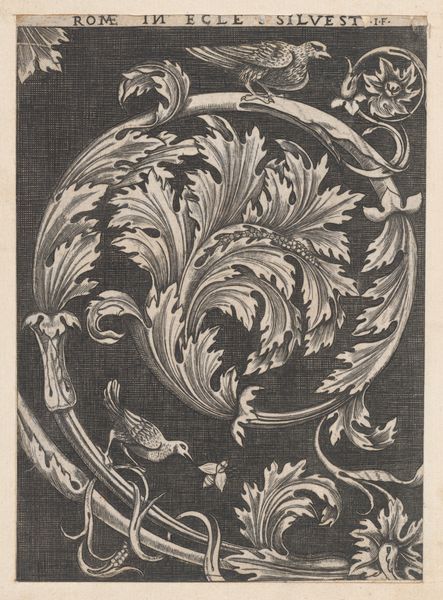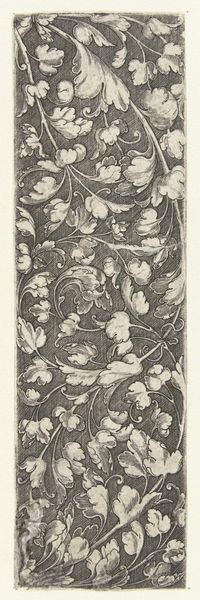
drawing, ink, engraving
#
drawing
#
pen drawing
#
pen illustration
#
pen sketch
#
old engraving style
#
ink line art
#
11_renaissance
#
ink
#
geometric
#
pen-ink sketch
#
line
#
pen work
#
engraving
Dimensions: height 96 mm, width 259 mm
Copyright: Rijks Museum: Open Domain
Curator: This pen and ink drawing, crafted sometime between 1533 and 1567, is titled "Voluut van bladranken, eindigend in een kolf met vruchtjes," which translates to "Volute of foliage, ending in an ear with berries." The artist, Enea Vico, clearly paid meticulous attention to detail. What’s your initial response to it? Editor: It strikes me as quite ornamental, almost like a frieze or decorative border. The repetition of leafy patterns and the controlled lines give it a sense of formal order. There’s a craftsman’s hand very evident here, in the texture and precision. Curator: Absolutely, its function as ornament is key. Vico operated in a society grappling with the impact of the printing press, influencing both the dissemination of ideas and the production of ornament. This piece is situated within the political currents of patronage and power. How might its imagery of fruit and foliage connect to societal hierarchies of labor and resources? Editor: That's a sharp point. Considering its production as an engraving, we must acknowledge the division of labor—Vico's artistry translated by someone into a matrix. The work's reliance on mass production techniques highlights the period's complex interaction with natural imagery as status symbols through printed materials. We see the intersection between natural abundance and the mechanical reproduction shaping aristocratic and emergent bourgeois identity. Curator: Exactly. We see here an artistic rendering born of a changing relationship to the land and its resources. Vico, I think, is subtly negotiating class identity within his works, aligning with the cultural anxieties of the 16th century. Editor: And Vico's intricate execution also makes me think of guilds. He isn't just celebrating form; he's exhibiting masterful control of tools. How can we read that display of skill in light of anxieties about craft versus industry? Curator: A great question that really brings out the social and material dimensions. In summary, we are encountering more than simply an exquisite piece of decorative art. Editor: Indeed. Understanding the means of its production and dissemination opens new avenues for understanding Renaissance culture itself.
Comments
No comments
Be the first to comment and join the conversation on the ultimate creative platform.

